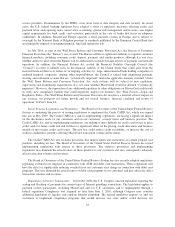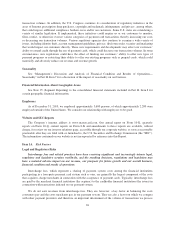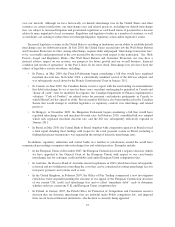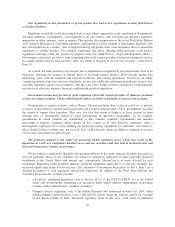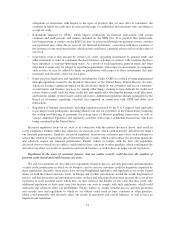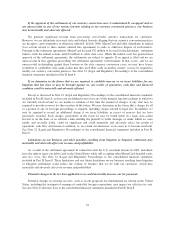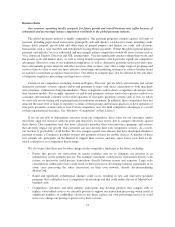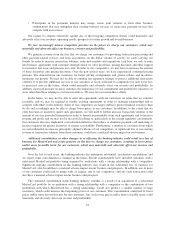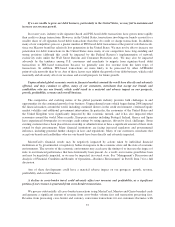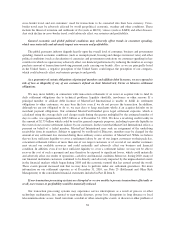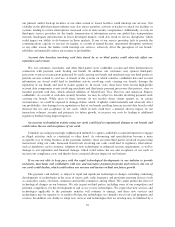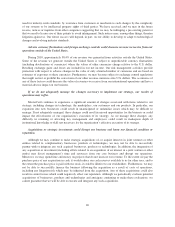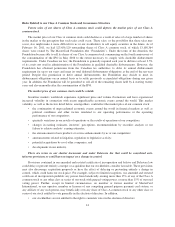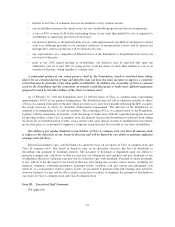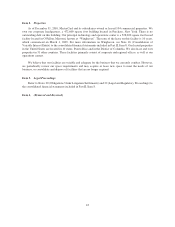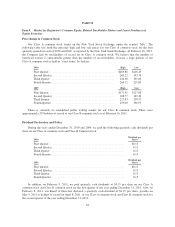MasterCard 2010 Annual Report Download - page 44
Download and view the complete annual report
Please find page 44 of the 2010 MasterCard annual report below. You can navigate through the pages in the report by either clicking on the pages listed below, or by using the keyword search tool below to find specific information within the annual report.• Participants in the payments industry may merge, create joint ventures or form other business
combinations that may strengthen their existing business services or create new payment services that
compete with our services.
Our failure to compete effectively against any of the foregoing competitive threats could materially and
adversely affect our revenues, operating results, prospects for future growth and overall business.
We face increasingly intense competitive pressure on the prices we charge our customers, which may
materially and adversely affect our business, revenue and profitability.
We generate revenue from the fees that we charge our customers for providing transaction processing and
other payment-related services and from assessments on the dollar volume of activity on cards carrying our
brands. In order to increase transaction volumes, enter new markets and expand our card base, we seek to enter
into business agreements with customers through which we offer incentives, pricing discounts and other support
to customers that issue and promote our cards. In order to stay competitive, we may have to increase the amount
of these incentives and pricing discounts. Over the past several years, we have experienced continued pricing
pressure. The demand from our customers for better pricing arrangements and greater rebates and incentives
moderates our growth. We may not be able to continue our expansion strategy to process additional transaction
volumes or to provide additional services to our customers at levels sufficient to compensate for such lower fees
or increased costs in the future, which could materially and adversely affect our revenue and profitability. In
addition, increased pressure on prices enhances the importance of cost containment and productivity initiatives in
areas other than those relating to customer incentives. We may not succeed in these efforts.
In the future, we may not be able to enter into agreements with our customers on terms that we consider
favorable, and we may be required to modify existing agreements in order to maintain relationships and to
compete with others in the industry. Some of our competitors are larger and have greater financial resources than
we do and accordingly may be able to charge lower prices to our customers. In addition, to the extent that we
offer discounts or incentives under such agreements, we will need to further increase transaction volumes or the
amount of services provided thereunder in order to benefit incrementally from such agreements and to increase
revenue and profit, and we may not be successful in doing so, particularly in the current regulatory environment.
Our customers also may implement cost reduction initiatives that reduce or eliminate payment card marketing or
increase requests for greater incentives or greater cost stability. Furthermore, a number of customers from which
we earn substantial revenue are principally aligned with one of our competitors. A significant loss of our existing
revenue or transaction volumes from these customers could have a material adverse impact on our business.
Additional consolidation or other changes in or affecting the banking industry could result in a loss of
business for MasterCard and create pressure on the fees we charge our customers, resulting in lower prices
and/or more favorable terms for our customers, which may materially and adversely affect our revenue and
profitability.
Over the last several years, the banking industry has undergone substantial, accelerated consolidation, and
we expect some consolidation to continue in the future. Recent consolidations have included customers with a
substantial MasterCard portfolio being acquired by institutions with a strong relationship with a competitor.
Significant ongoing consolidation in the banking industry may result in the substantial loss of business for
MasterCard, which could have a material adverse impact on our business and prospects. In addition, one or more
of our customers could seek to merge with, or acquire, one of our competitors, and any such transaction could
also have a material adverse impact on our business and prospects.
The continued consolidation in the banking industry, whether as a result of an acquisition of a substantial
MasterCard portfolio by an institution with a strong relationship with a competitor or the combination of two
institutions with which MasterCard has a strong relationship, would also produce a smaller number of large
customers, which could increase the bargaining power of our customers. This consolidation could lead to lower
prices and/or more favorable terms for our customers. Any such lower prices and/or more favorable terms could
materially and adversely affect our revenue and profitability.
34



